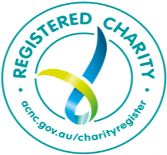What is racism?
Many define racism as “prejudice plus power”. Racism is indeed more than just prejudice between people or groups of people. Racism occurs when prejudice is accompanied by the power to harm, oppress or discriminate, either by individuals, organisations or systems. Racism happens through unjust covert or overt practices and structures that discriminate (with or without intent) against a person or a group, resulting in inequity and unequal outcomes for people based on their racial background or ‘race’.
What is race?
Race itself is a social construct used to classify humans into distinct groups based on physical, genetic and social traits. Scientists now agree that, biologically speaking, ‘race’ does not exist. However, as scholars explain, “this doesn’t mean that race is imaginary or not real. While race may not exist biologically, it exists powerfully and materially because ideas about race formed, legitimised – and continue to form and legitimise – social, cultural and political structures, practices, and beliefs.”1 Indeed, as the Australian Human Rights Commission points out: “ (…) ideas of race (and ideas that are racist) were foundational to the development of many of today’s laws, cultures and societies, with certain racial identities perceived and positioned as superior to others.”2
Impact on First Nations Peoples
In Australia, race thinking and colonialism went hand in hand, permeated with the same impetus to draw a binary between ‘civilised’ and ‘primitive’ and the same necessity to draw human groups into strict hierarchies.3 This has had a profound and devastating impact on First Nations Peoples in Australia, as they were subjected to dispossession, violence, control and the forcible removal of Aboriginal children, the effects of which are enduring, resulting in deep inequity and injustice that continue until today.4 Even after the formal end of the colonial period in Australia (in 1901), governments continued to enact laws based on race thinking such as the White Australia Policy, which limited non-British immigration to Australia between 1901 and 1966.
Racism in Australia today
Although Australia today is different from its historical racial past, with openly discriminatory laws such as the White Australia Policy formally abolished, racial justice and equity remain an enduring issue.5 While the majority of the population currently sees the nation as a successful multicultural state, racism is still prevalent, including institutional racism, leading to inequitable opportunities and outcomes that limit the human rights of racial minorities.6 Learn more about the effects and impacts of racism in Australia today on our ‘Racism in Australia’ page.
Different forms of racism
Different terms are used to describe racism, which are sometimes used interchangeably.
Systemic racism
Systemic racism is an ideology that attaches common meanings, ideas, norms and values to racial groups, which then become embedded in organisations institutions and societies, produce unequal outcomes for people based on their race, and ultimately serve to justify the subordination of people.7 As such, racism becomes a system; it becomes the default of the society and is reproduced automatically.8 Racism is deeply entrenched but not abstract; it has direct effects on people’s lives, including violence and discrimination.9 As Alison Whittaker explains: “Systemic racism creates the architecture around which other forms of racism are enabled, supported and justified.”10 This includes interpersonal racism, e.g. individual physical attacks, acts of discrimination or verbal abuse.
Institutional racism
Institutional racism is a term that is often used interchangeably with “systemic racism”. It refers to the normalisation of white supremacy in institutions, and organisations through their policies, laws and practices, producing patterns of unequal outcomes for people based on their race relating to e.g. employment, health, housing, incarceration rates and wealth. Institutional racism exists as institutions and organisations “can encode and enact racial prejudice and discrimination in their systems without the need for individual racists or white supremacists to act intentionally or express this motivation.”11
Structural or societal racism
Structural or societal racism refers to a form of racism that is deeply entrenched into the very fabric of society, where it operates at the level of deep social structures.12 Scholars often see this form of racism as “the totality of the social relations and practices that reinforce white privilege”.13 They remain in place because members of the dominant race (people racialised as ‘white’) receive material benefits from this order (actively or passively), whereas people racialised as the subordinate race struggle to change the status quo.14
Individual or interpersonal racism
Individual or interpersonal racism – this is a form of racism that occurs between individuals or groups of people often in a subtle, casual manner and in everyday settings. It includes the idea, belief or attitude that some human groups are superior or inferior based on their ‘race’. It can be expressed in the form of jokes, off-hand remarks, abuse, harassment, humiliation and other discriminatory or hateful acts. It can be done intentionally or unintentionally, but this ultimately does not matter as it does not remove the negative impact on people who are on the receiving end. Interpersonal racism is also referred to as ‘everyday racism’, and considered by some scholars to be the manner in which systemic or structural racial inequity plays out between people in day-to-day settings.15
The impacts of racism in Australia
How does racism in Australia affect us? Two in five people living in Australia have been a target of verbal racial abuse. Find out how racism and racial discrimination impact our daily lives and society.
How to become an anti-racist
Being anti-racist means taking active steps in your daily lives to dismantle racial inequity around you. Discover these actionable tips you can do to actively challenge racism and make a positive social change!
References and Further reading
1 Chelsea Watego, David Singh and Alissa Macoun, Partnership for Justice in Health: Scoping Paper on Race, Racism and the Australian Health System, Discussion Paper, The Lowitja Institute, 2021, 4. <https://www.lowitja.org.au/content/Image/Lowitja_PJH_170521_D10.pdf>.
2 Australian Human Right Commission, ‘Racism it Stops with Me: Key Terms’, viewed 11 September 2023. https://itstopswithme.humanrights.gov.au/commit-to-learning/key-terms
3 Bill Ashcroft, Gareth Griffiths and Helen Tiffin, Postcolonial Studies: The Key Concepts, Routledge, 3rd ed. 2013, 218.
4 National Congress of Australia’s First Peoples, Position Paper: National Anti-Racism Partnership and Strategy, June 2012, 3.
5 Amanuel Elias, Fethi Mansouri and Yin Paradies, ‘Conclusion’, in: Racism in Australia Today, Palgrave Macmillan, 2021. https://doi.org/10.1007/978-981-16-2137-6_11
6 Amanuel Elias, Fethi Mansouri and Yin Paradies, ‘Conclusion’, in: Racism in Australia Today, Palgrave Macmillan, 2021. https://doi.org/10.1007/978-981-16-2137-6_11
7 Dwanna L. McKay, ‘Masking Legitimized Racism: Indigeneity, Colorblindness, and the Sociology of Race’ in Kimberlé Williams Crenshaw, Luke Charles Harris, Daniel Martinez HoSang and George Lipsitz (eds.) Seeing Race Again: Countering Colorblindness across the Disciplines, University of California Press, 2019, 88.
8 Robin DiAngelo, White Fragility: Why it’s so Hard for White People to Talk About Racism, Beacon Press, 2018, 21.
9 Alana Lentin, Racism: A Beginner’s Guide, Oneworld Publications, 2008, 32, 88.
10 Alison Whittaker, ‘Aboriginal Woman Tanya Died in Custody. Now an Inquest is Investigating if Systemic Racism Played a Role‘, The Conversation, 28 August 2019. <https://theconversation.com/aboriginal-woman-tanya-day-died-in-custody-now-an-inquest-is-investigating-if-systemic-racism-played-a-role-122471>.
11 Chelsea Watego, David Singh and Alissa Macoun, Partnership for Justice in Health: Scoping Paper on Race, Racism and the Australian Health System, Discussion Paper, The Lowitja Institute, 2021, 6. <https://www.lowitja.org.au/content/Image/Lowitja_PJH_170521_D10.pdf>.
12 Chelsea Watego, David Singh and Alissa Macoun, Partnership for Justice in Health: Scoping Paper on Race, Racism and the Australian Health System, Discussion Paper, The Lowitja Institute, 2021, 7.
13 Eduardo Bonilla-Silva, Racism without Racists: Color-blind Racism and the Persistence of Racial Inequality in the United States, Rowman & Littlefield, 5th ed. 2018, 9.
14 Eduardo Bonilla-Silva, Racism without Racists: Color-blind Racism and the Persistence of Racial Inequality in the United States, Rowman & Littlefield, 5th ed. 2018, 9.
15 Australian Human Right Commission, ‘Racism it Stops with Me: Key Terms’, viewed 11 September 2023. https://itstopswithme.humanrights.gov.au/commit-to-learning/key-terms


